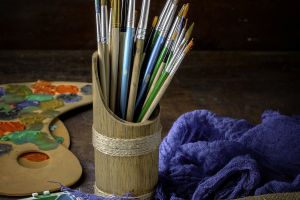Bongo drums are more than just instruments; they are storytellers of rhythm, culture, and emotion.
Known for their distinctive shape and captivating sound, bongo drums are a staple in Latin American music and have found their way into global music genres.
Performing on bongo drums is an art form that combines skill, passion, and creativity, turning simple beats into mesmerizing music!
The Structure of the Bongos
Bongo drums are a pair of small, open-bottomed drums of different sizes, typically joined together. The larger drum, called the hembra (female), and the smaller drum, macho (male), are traditionally made of wood with animal hide or synthetic drumheads. Their high-pitched, sharp tones create dynamic rhythms that stand out in a musical ensemble.
These drums are usually played with the hands, and their lightweight structure makes them ideal for both stationary and mobile performances. Their portability allows performers to bring their music to various settings, from concert halls to street performances.
Techniques of Bongo Drumming
Mastering the bongos requires understanding its unique techniques and rhythm patterns. Basic techniques include the open tone, where the fingers strike the edge of the drumhead, and the slap, which produces a sharper, more percussive sound.
The heel-tip technique, a combination of palm and fingertip strikes, is essential for creating complex rhythms.
Syncopation, or placing emphasis on off-beats, is a hallmark of bongo drumming. This technique gives the music its lively and unpredictable quality, captivating audiences and inviting them to move to the rhythm.
A skilled performer seamlessly blends these techniques, crafting rhythms that range from simple patterns to intricate compositions.
The ability to improvise is also a key aspect of bongo drumming, allowing performers to adapt their style to the mood of the moment or the energy of the audience.
The Role of Bongos in Performance
Bongo drums shine both as solo instruments and as part of an ensemble. In Latin music, they are integral to genres like salsa, son, and merengue, setting the tempo and enhancing the groove. When paired with other percussion instruments like congas and timbales, the bongos add layers of rhythm that make the music rich and textured.
As solo instruments, bongos allow performers to showcase their technical prowess and creativity. The player's hands dance across the drumheads, producing rhythms that range from soothing to exhilarating. This versatility makes bongo drum performances captivating to watch and hear.
Connecting with the Audience
A bongo drum performance is not just about playing beats; it's about creating a connection. The performer's energy, passion, and rhythm draw the audience into a shared musical experience. Whether it's a lively dance tune or a contemplative rhythm, bongo drums have the power to evoke emotions and build a communal atmosphere.
Performing on bongo drums is a dynamic art form that combines technical skill with emotional expression. From their cultural roots in Latin America to their influence in global music, bongos continue to captivate audiences with their vibrant rhythms.
Whether you're a musician or a listener, the bongo drum's infectious energy is an invitation to celebrate the universal language of music.


